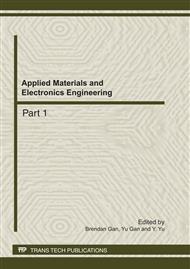p.740
p.744
p.748
p.752
p.759
p.763
p.767
p.775
p.780
Study on the Water Proof Seal for Underwater Robot Using MR Fluid
Abstract:
Water proofing is an obvious problem in developing successful underwater robots. In previous research, most underwater robots have used a mechanical seal for water proofing. However, this kind of seal has not proved reliable because of friction and wear between the stationary parts and moving parts. This paper presents a method to seal the moving parts in underwater robots, especially robot fish. The proposed seal for under water robots is developed using Magneto Rheology (MR) fluid. MR fluid is a kind of smart material, of which the viscosity varies with the external magnetic field. This fluid is composed of silicon oil and small magnetic particles, which are micrometer sized, and when an external magnetic field is applied to the fluid, the small particles align with the magnetic flux line. The arrays of magnetic particles in the fluid inhibit the fluid flow, which changes the viscosity of fluid. Taking advantage of this phenomenon, we devised a seal with a permanent magnet and MR fluid. Our analysis demonstrates the performance of the developed seal. The magnetic equivalent circuit method and FEM (Finite Element Method) are used to calculate the magnetic field and the analysis results show that the developed seal can sustain 10 atm pressure.
Info:
Periodical:
Pages:
759-762
Citation:
Online since:
October 2011
Authors:
Keywords:
Price:
Сopyright:
© 2012 Trans Tech Publications Ltd. All Rights Reserved
Share:
Citation:


